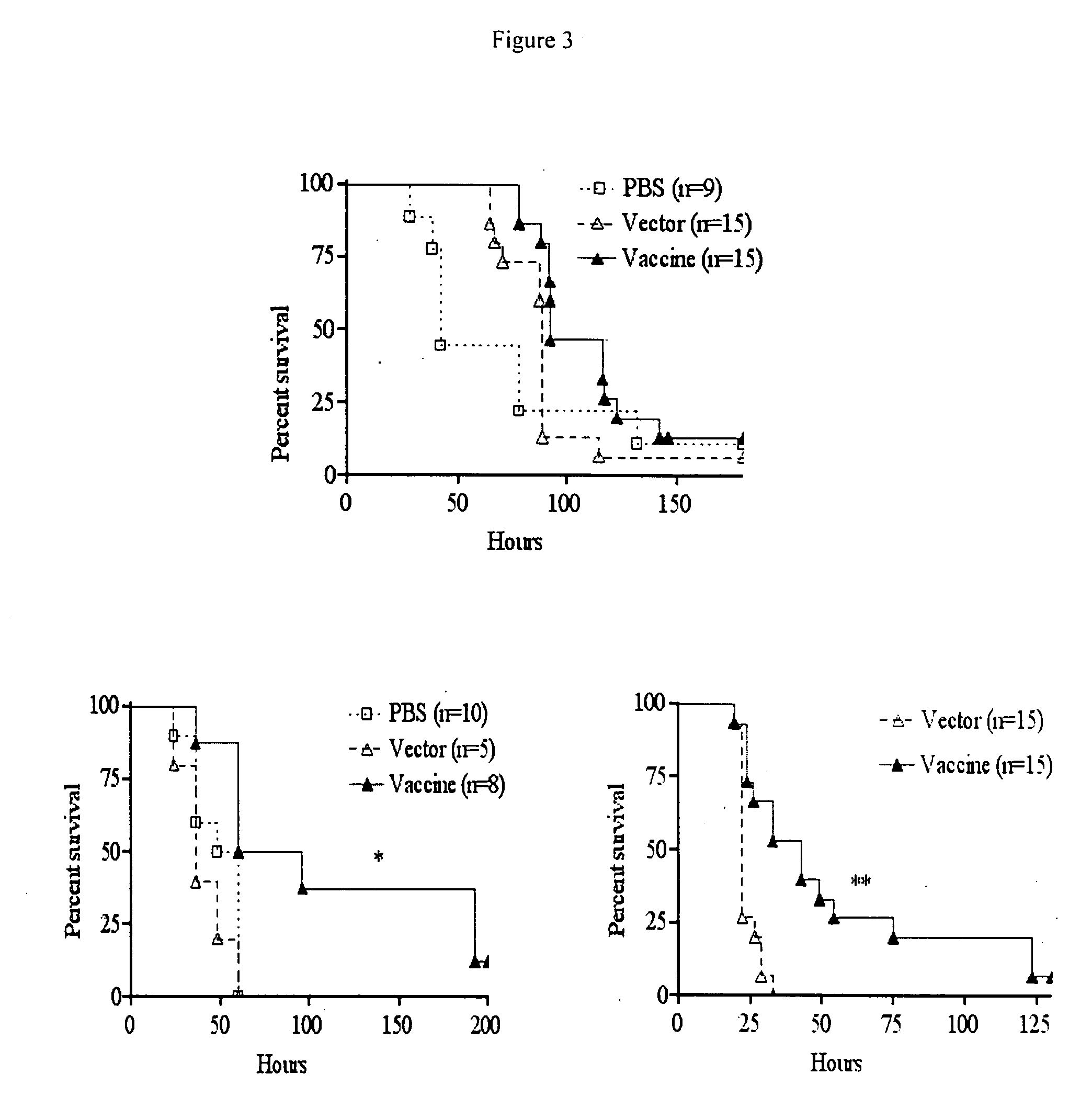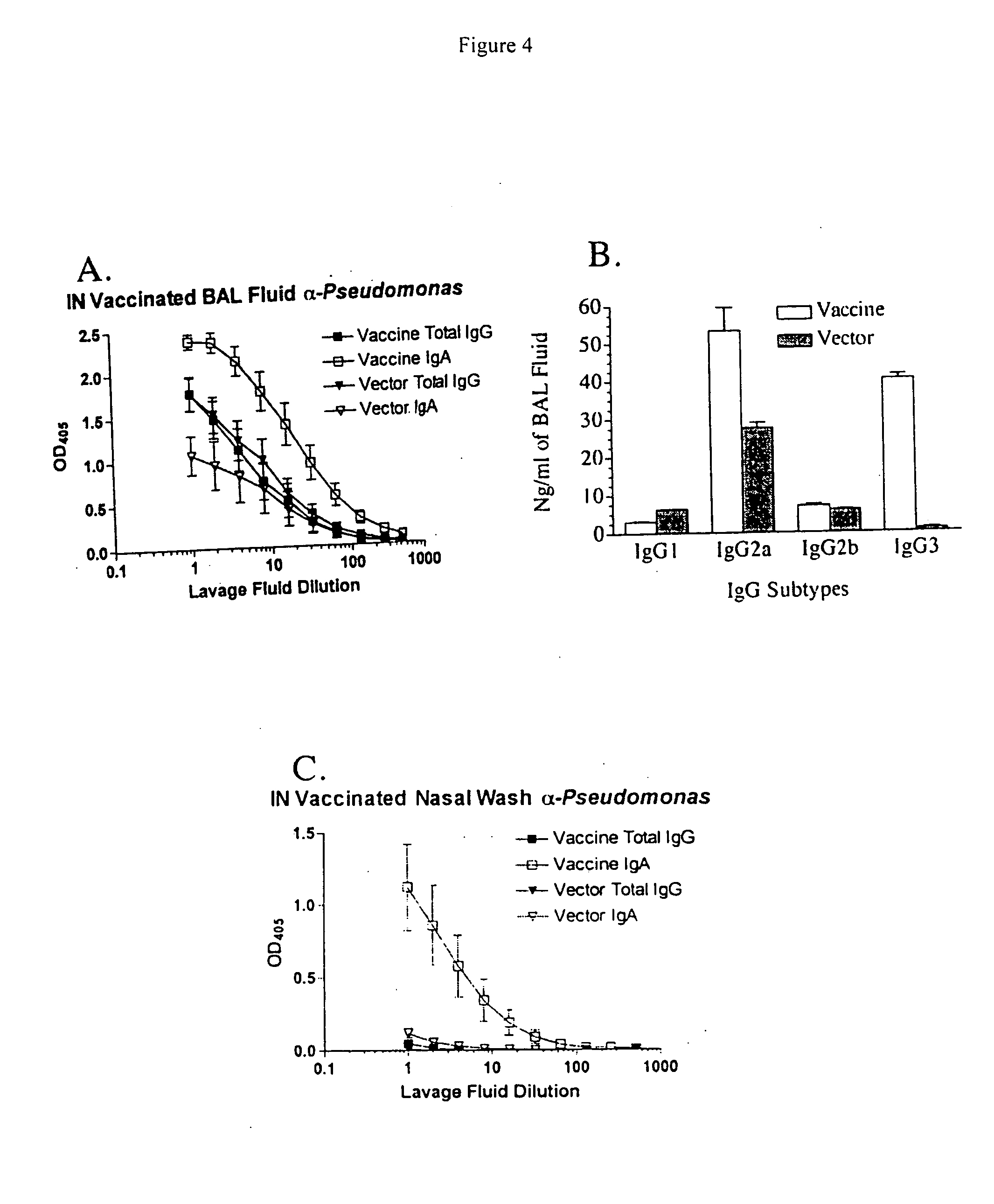Intranasal recombinant Salmonella vaccine encoding heterologous polysaccharide antigens
a heterologous polysaccharide, salmonella vaccine technology, applied in the direction of anti-vector-borne diseases, pharmaceutical active ingredients, medical ingredients, etc., can solve the problems of poor immunogens of purified polysaccharides, poor antibody response to this vaccine, poor immunological response or immunological memory of antigens, etc., to promote robust immune response and facilitate delivery
- Summary
- Abstract
- Description
- Claims
- Application Information
AI Technical Summary
Benefits of technology
Problems solved by technology
Method used
Image
Examples
Embodiment Construction
[0036] Methods used to express P aeruginosa O antigens in a heterologous system such as Salmonella are well known and do not constitute a part of this invention. To express P. aeruginosa O antigens in a heterologous system such as Salmonella, the genes encoding the enzymes for their biosynthesis must be cloned. Fortunately, the genes encoding the enzymes for the O antigen are often clustered in the chromosome and can be isolated on large DNA fragments. The sequences encoding the genes for P. aeruginosa O antigen biosynthesis and assembly have been studied in detail for serogroups O5, O6 and O11 and reported by Burrows et al 1996. Molecular characterization of the Pseudomonas aeruginosa serotype O5 (PAO1) B-band LPS gene cluster. Molec Microbiol 22:481-495; Belanger et al 1999. Functional analysis of genes responsible for the synthesis of the B-band O antigen of Pseudomonas aeruginosa serotype O6 lipopolysaccharide. Microbiol 145:3505-3521; and Dean et al 1999. Characterization of th...
PUM
| Property | Measurement | Unit |
|---|---|---|
| optical density | aaaaa | aaaaa |
| temperature | aaaaa | aaaaa |
| temperature | aaaaa | aaaaa |
Abstract
Description
Claims
Application Information
 Login to View More
Login to View More - R&D
- Intellectual Property
- Life Sciences
- Materials
- Tech Scout
- Unparalleled Data Quality
- Higher Quality Content
- 60% Fewer Hallucinations
Browse by: Latest US Patents, China's latest patents, Technical Efficacy Thesaurus, Application Domain, Technology Topic, Popular Technical Reports.
© 2025 PatSnap. All rights reserved.Legal|Privacy policy|Modern Slavery Act Transparency Statement|Sitemap|About US| Contact US: help@patsnap.com



